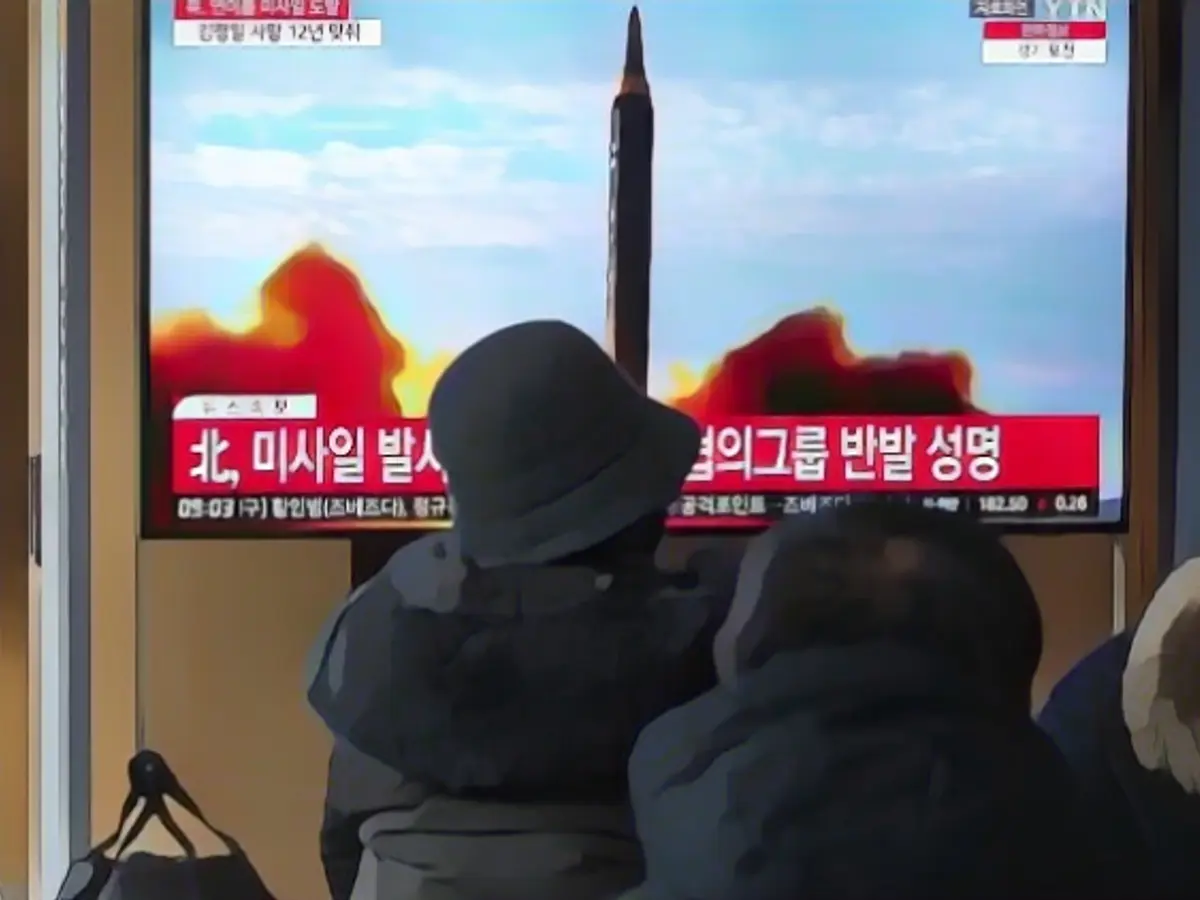Breaking News: North Korea Launches Potential ICBM
Just twelve hours after its last test, North Korea makes headlines again as it allegedly fires a long-range missile into the sea. According to Japan, this could potentially be an intercontinental ballistic missile (ICBM).
South Korean reports suggest that Pyongyang launched a second ballistic missile within a span of twelve hours. The missile was fired from an area near the capital, Pyongyang, and headed towards the sea off the east coast of North Korea.
Japan's Ministry of Defense confirmed that North Korea had apparently launched a ballistic missile. The missile is believed to have crashed into the sea west of Hokkaido, approximately an hour after the launch. The range and maximum altitude of the missile remain unknown, yet Japanese television station NHK reported, citing the Japanese Ministry of Defense, that it could be a long-range missile.
Hours after the launch, North Korea's Ministry of Defense accused the United States and South Korea of reckless military actions. The ministry, speaking through the state news agency KCNA, stated that the arrival of the nuclear submarine USS Missouri in South Korea was proof that the U.S. was considering a nuclear war.
Government officials in Seoul and Tokyo had previously warned that nuclear-armed North Korea was preparing to test-fire one of its ICBMs this month. These missiles can reach targets more than 5,500 kilometers away.
Related Stories
Following Japan's assessment, South Korea and international observers are closely monitoring North Korea's continuous rocket tests, raising concerns about the escalation of the conflict in North Korea. Japan and South Korea have placed their citizens on high alert, with potential threats from North Korea's intercontinental ballistic missiles necessitating safety guidelines for residents near impact zones.
Source:
Enrichment Data:
North Korea's recent alleged ICBM launch has sparked concerns worldwide. The available data and insights on the topic are as follows:
- Capabilities and Threats:
- North Korea has been working on developing its ICBM capabilities, with the Hwasong-19 potentially able to deliver a nuclear payload to targets across North America.
- The Hwasong-19's solid-fuel design makes it harder to detect and intercept, as the preparation time for launch is significantly reduced.
- US Northern Command and North American Aerospace Defense Command (NORAD) head, General Gregory Guillot, has expressed concerns about North Korea's rapid transformation from missile development to serial production, potentially outpacing US ballistic missile defenses.
- Recent Tests:
- In January 2025, North Korea tested a new "super-large" nuclear-capable ICBM, the Hwasongpho-17, which reached an altitude of 6,248.5 kilometers and traveled a lateral distance of 1,090 kilometers before falling into the East Sea within Japan's Exclusive Economic Zone.
- Production and Serial Deployment:
- The Pentagon believes that North Korea might soon transition into the production phase of ICBMs capable of reaching the U.S., citing the successful launch of the Hwasong-19 ICBM equipped with solid fuel.
- Technological Advancements and Implications:
- The Hwasong-19 is believed to include a multiple independently targetable reentry vehicle (MIRV) system, which could potentially increase the number of warheads per missile and improve second-strike resilience.
- However, there are questions about North Korea's ability to accurately place warheads on multiple targets after their release from a ballistic missile, with some experts suggesting that the ongoing Ukraine war may have provided North Korea with valuable experience in enhancing missile accuracy.
- Strategic Intentions:
- North Korea's military build-up, including advanced missile capabilities, is aimed at challenging the U.S. and its regional allies. The regime's ultimate goal is to disrupt US nuclear extended deterrence (NED) in the Korean Peninsula and reunify the peninsula under its control.
These developments underscore the growing tensions and the urgent need for advanced missile defense systems to combat North Korea's expanding missile threats.




